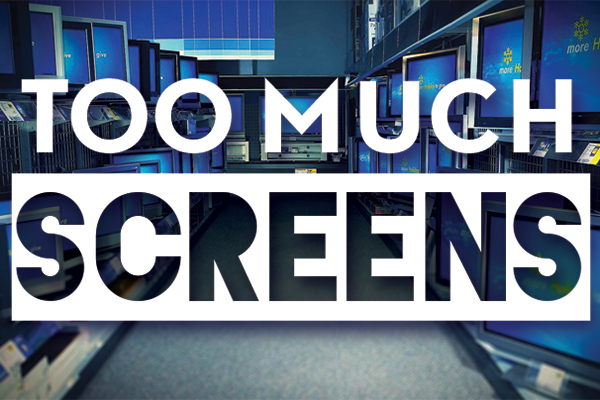Too much screens | Issue 20
The Larry Sanders Show
The Larry Sanders Show splits its time between behind-the-scenes goings-on of the production of the Larry’s talk show, and the talk show itself. The former are shot on film (the way we're used to seeing fiction shot) and follow Larry, the vain, aging host, and the others who work on the show’s staff. The talk show sections are shot like a real talk show: on videotape and in front of a live audience. The disconnect between what goes on when the cameras are rolling and when they aren’t highlights that the kind of charisma it takes to host television isn't the same as real-life charm. To the audience at home, tired after a long day, Larry is a breezy, funny man, making slightly-hacky, topical jokes and engaging in light banter with famous people. But off-stage, Larry is a neurotic, preening man desperate for validation, friendly only to those he needs to impress, and surrounded by a staff who similarly bow to him or not depending which way his head is turned.
Although now commonplace, The Larry Sanders Show was ahead of its time, having fictionalised versions of real-life celebrity guest-stars engage in the same two-facedness as Larry, maintaining a charming persona in front of the audience, but being backstabbing, awkward, or generally rude in-person. Especially impressive was the calibre of celebrity that this small cable sitcom was able to attract over its seven-year run, including Jennifer Anniston, Alec Baldwin, Hugh Hefner, and Sean Penn, and many more names that were surely impressive in the 90s but have since been left behind. The show’s illusion was also upheld in terms of musical guests, featuring performances by Sting, Butthole Surfers, Warren Zevon (who gets forced into playing ‘Werewolves of London’ after initially refusing), and the Wu Tang Clan.
As well as being a fascinating (at least, fascinating to freaks like me) time capsule of US celebrity culture in the 90s, and a detailed look at the world of US late night talk shows, The Larry Sanders Show is a hilarious, uncompromising satire of Hollywood and the personalities it both selects for and breeds. Further, it provides an idea of the kind of fireworks that occur when those personalities come into conflict, a display only stifled by the sedative presence of cameras and an audience.



